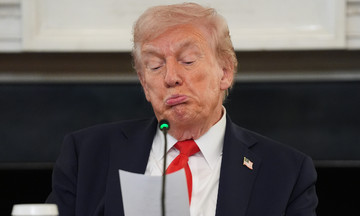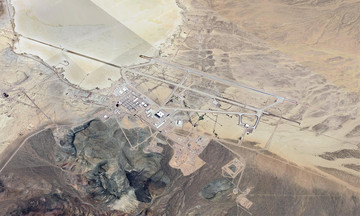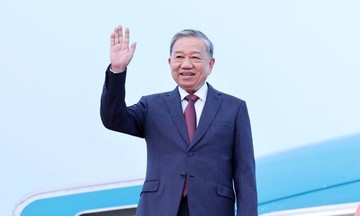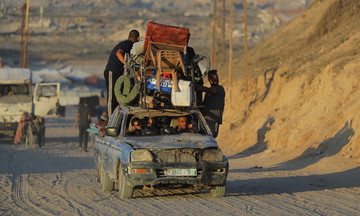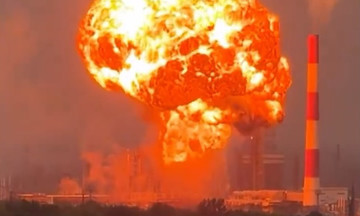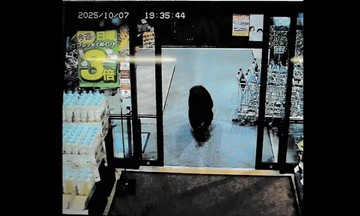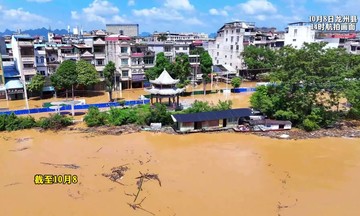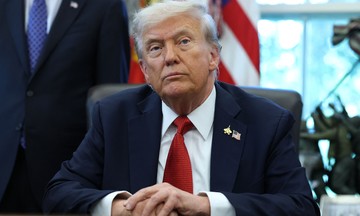The connection between Vietnam and Murray Hiebert, senior associate at the Center for Strategic and International Studies (CSIS) in Washington and fellow at the Bower Group Asia, spans five decades.
He first set foot in Hanoi in 1976, at the age of 33, as a journalist, keenly aware of the challenges Vietnam faced in rebuilding after the war. A former correspondent for the Far Eastern Economic Review in several Southeast Asian countries and former Asia reporter for the Wall Street Journal, he has followed Vietnam's journey from isolation to international integration.
Hiebert spoke with VnExpress about Vietnam's integration and development, both as a foreign correspondent based in Hanoi and later as a leading expert on Southeast Asia.
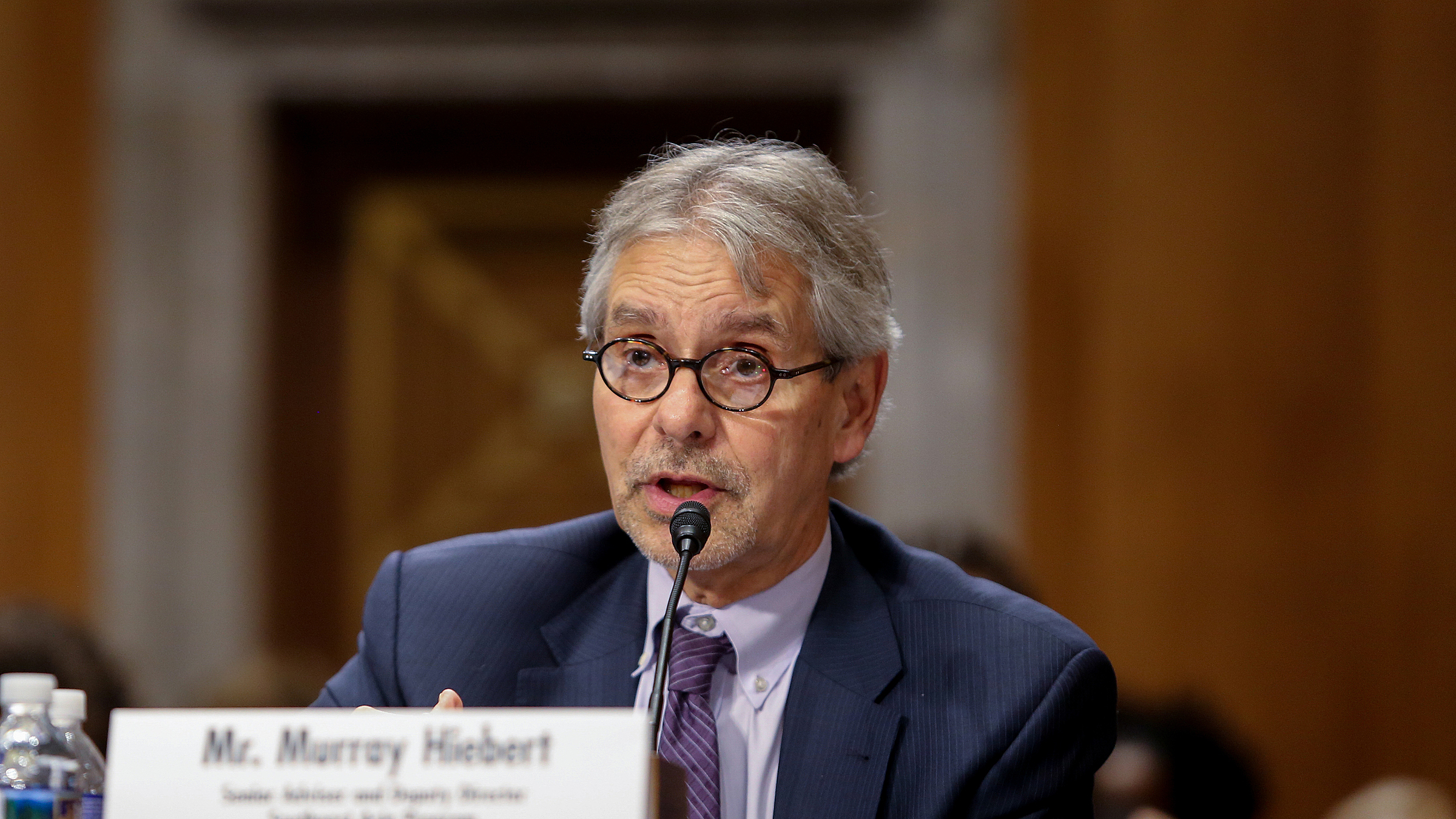 |
Expert Murray Hiebert speaks at a meeting with the US Senate Foreign Relations Committee in 2017. Photo: CSIS |
Expert Murray Hiebert speaks at a meeting with the US Senate Foreign Relations Committee in 2017. Photo: CSIS
- From your first visit to your most recent return, how do you perceive Vietnam's changes?
- My first time in Vietnam was in June 1976, just 13 months after the war ended. Hanoi was very poor then; Kham Thien Street was still largely in ruins, and the electricity was unreliable. Nothing worked consistently.
The main mode of transportation was bicycles; there must have been a million of them. There were only a few Soviet Ladas for officials or diplomats. Food was scarce, and people wore simple clothes. It was understandable, given that Vietnam had just emerged from war.
Diplomats all lived in hotels, such as the Metropole, which was then seriously dilapidated, or the Thang Loi Hotel in the West Lake area. They had very large rooms for rent, which diplomatic missions used as both living quarters and offices. The United Nations office was located right inside the Metropole Hotel.
Today, Vietnam has rebuilt and upgraded itself. Hanoi and Ho Chi Minh City have completely transformed their infrastructure. Each city now has a metro line. The atmosphere is also vastly different, bustling and vibrant. The last time I visited Vietnam was in 2023. There were many cars and motorbikes, as well as many good restaurants.
In 1976, I felt a sense of weariness in Hanoi, as the city had just emerged from years of bombing. Now I sense excitement everywhere. Everyone understands that Vietnam's path to modernization will be arduous and require time. I think perhaps this process has happened much faster than many people anticipated.
The biggest difference between the two eras is probably the self-confidence of the officials; they are very confident in their abilities. Many are highly educated abroad. Looking back at Vietnam between 1975 and 2025, the transformation is as stark as night and day, like comparing how different Mars and Venus are.
- In the 1990s, you were a reporter covering Asia, including Vietnam. This was also the time when Vietnam sought to break the embargo and integrate into the region. What is your most memorable experience from this period?
- An interesting story is that around 1993-1994, Scott Marciel, the first US diplomat to arrive in Hanoi, couldn't transfer money through the bank due to the embargo. He had to bring all the cash he needed from Bangkok, from food to travel expenses. That detail shows how isolated Vietnam was and how distant the relationship with the US was then, very different from now when you can use credit cards or transfer money easily between the two countries.
In the early 1990s, Vietnam pursued a policy of opening up but was still under embargo. The Cambodia issue and relations with China had just been resolved. The US was taking the first steps in lifting the embargo and normalizing relations with Vietnam. It then took more time for Vietnam to integrate into ASEAN (Association of Southeast Asian Nations).
Each step was a long journey, not simply snapping your fingers and saying, "We're normalized now," when there were still many issues to be resolved behind the scenes. It was a very bumpy journey, not as easy as we now look back on it.
I was in Hanoi when the US lifted the embargo in 1994. Everyone celebrated boisterously. I still remember the image of Coca-Cola erecting a giant bottle, about 4-5 meters tall, in front of the Hanoi Opera House.
Because the normalization process was difficult, I thought US-Vietnam relations would also progress slowly. The 1997-1998 Asian financial crisis also slowed things down, as the ASEAN region was severely affected. By the 2000s and then the 2010s, the relationship really accelerated. In 2023, the two countries elevated their relationship to a Comprehensive Strategic Partnership, which I personally didn't expect to happen so quickly.
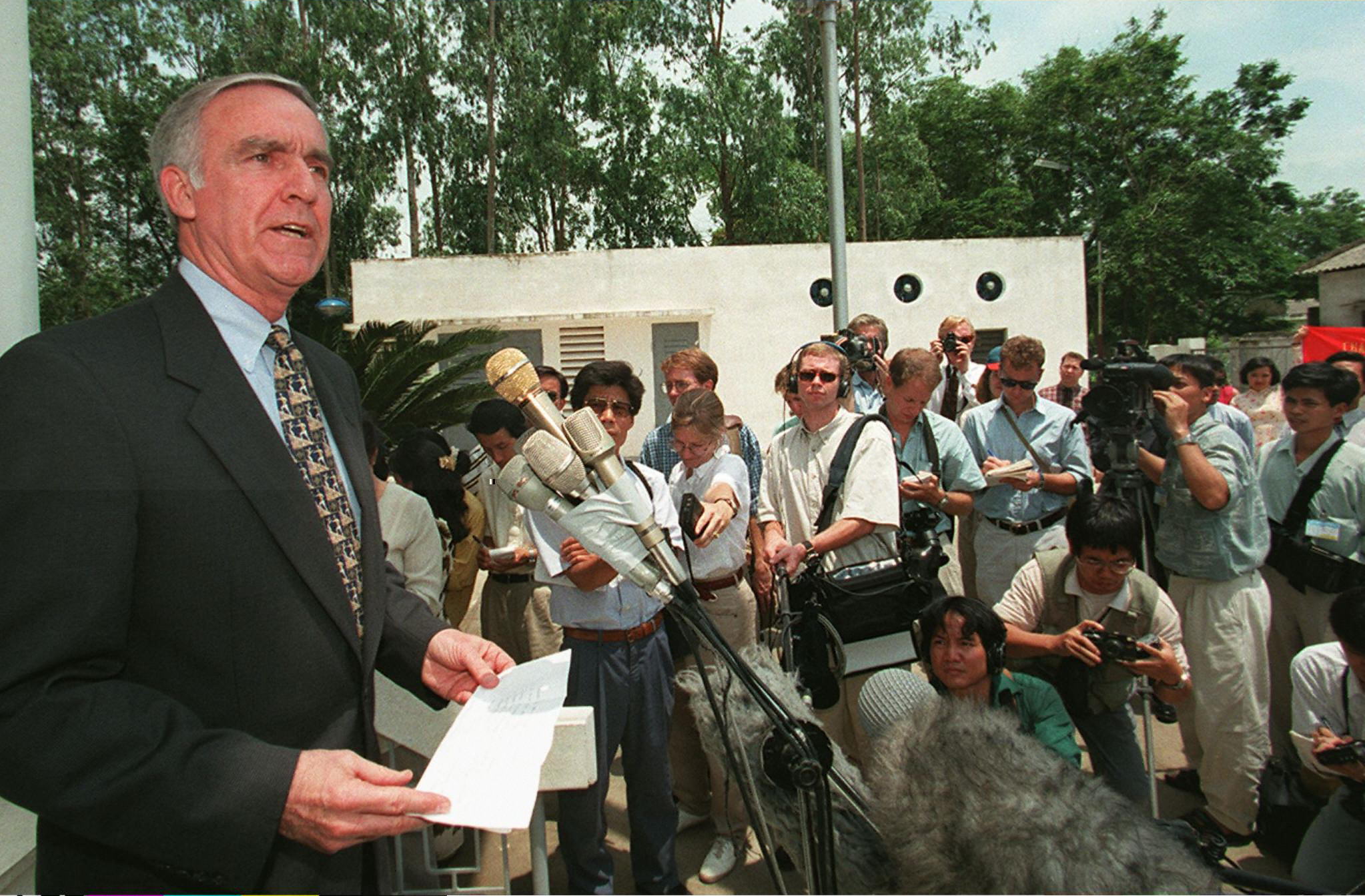 |
US Ambassador Douglas "Pete" Peterson speaks in Hanoi on May 9, 1997, upon assuming his post as the first ambassador to Vietnam after the two countries normalized relations. Photo: AFP |
US Ambassador Douglas "Pete" Peterson speaks in Hanoi on May 9, 1997, upon assuming his post as the first ambassador to Vietnam after the two countries normalized relations. Photo: AFP
- Looking back at Vietnam's journey from an embargoed nation to an active member of ASEAN, a strategic partner and comprehensive strategic partner of all five permanent members of the UN Security Council, how do you assess this?
- There are tensions among major countries, but Vietnam still walks a tightrope. I'm impressed with how Vietnam maintains good relations with all sides.
Vietnam has been proactive in its relations with major powers, especially with China and the US, as well as European countries. Vietnam is very proactive in building trade relations, expanding relationships, and diversifying partners.
This is a "multifaceted" foreign policy, and Vietnam's choice has been viewed very positively. Vietnam's diplomatic achievements have really taken people by surprise. They demonstrate proactiveness and strategic thinking. In the places where I've lived and worked, the people I know are closely following Vietnam.
In Washington, it's really hard for a country's embassy to get attention, but Vietnam is very dynamic. Many people have said to me, "I can't understand why Vietnam has so many contacts on Capitol Hill, in all branches of government."
I just reply that I wonder myself, but it's probably because Vietnam is very dynamic: "You sit in your embassies and wait for the sun to shine on you. The Vietnamese, they go out, go everywhere, and meet everyone."
Many people are envious of Vietnam, not understanding how you have developed such a large and rapid network of economic partners, with so many trade agreements, far more than your neighbors. Companies travel throughout Southeast Asia looking for the right place and ultimately end up in Vietnam.
Companies choose to invest in Vietnam partly because the Vietnamese are very good at recognizing what the company wants from them. Vietnam won't let a company leave without trying everything and persuading them to come back to the negotiating table.
Thanh Danh




